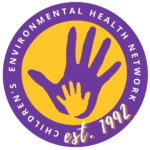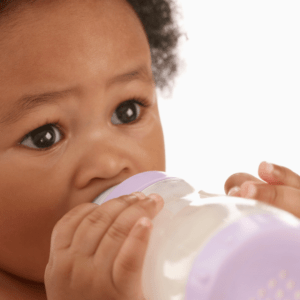Michigan’s children’s environmental health: Child care and beyond
Michigan’s child care industry was struggling even before COVID-19. The pandemic and the tumult of this past year has certainly heightened the issues, with child care closures and both parents and child care providers and staff struggling financially. It is of critical importance for Michigan to support families in accessing high quality affordable child care, and to support child care providers in remaining open, safe, and healthy.
It shouldn’t take a pandemic to remind us that child care is essential to children, families, and society. Crises have a way of revealing our problematic oversights and offer opportunities for true progress. Consider environmental health. Harvard researchers found that people exposed to higher levels of air pollution (disproportionately people of color and those living in poverty) are at greater risk from the coronavirus. Yet building the political will to enact protective, equitable environmental health policies is often a struggle. Everyone, and especially all children deserve clean air and water, safe food and products, a stable climate, and healthy places to live, learn, and play.
Eco-Healthy Child Care® (EHCC) assists child care professionals in their efforts to reduce or eliminate environmental hazards, such as lead and pesticides, in and around their facilities. Over this past year we have been guiding providers during this crisis with information about safe and effective cleaning and disinfecting and safe re-opening practices.
While we focus on the child care space, our parent organization, the Children’s Environmental Health Network (CEHN), has been the leading national voice for children’s environmental health across all settings for nearly three decades. Recently, CEHN has embarked on a project to provide a profile of children’s environmental health (CEH) for each of the 50 U.S. states, and Michigan made their first batch of six.
How do you craft a state’s CEH profile? CEHN staff carefully combed through collections of data on environmental hazards, environmental exposures (biomonitoring), and children’s health outcomes and identified 9 children’s environmental health indicators (CEHI) that met their inclusion criteria of being meaningful, regularly collected, robust data that is uniformly defined across all 50 states. This proved difficult, and one key takeaway is the need for more intentional focus on nationally coordinated CEH surveillance at the state and local levels.
You might be wondering how Michigan fared in their CEH profile? Make sure you check it out and share with others in the state. Below are a few key points.
Drinking Water
Michigan’s drinking water gets a lot of attention since the Flint lead crisis, and the CEH profile points out that Michigan has the most PFAS contaminated water sites of the states. However, it is important to note that the state has responded rapidly and strongly via the Michigan PFAS Action Response Team (MPART), a multi-agency collaboration that has provided communities with alternative drinking water sources and filters. Recently, Governor Whitmer announced a $25 million grant program to invest in water infrastructure and projects that remove or reduce contaminants such as PFAS under Michigan’s Clean Water Plan.
Air Quality
While overshadowed by drinking water concerns, Michigan’s air quality is important to note. According to the CEH profile approximately 73% of the state’s children live in counties with unhealthy levels of ozone pollution. This is meaningful, because the profile also imparts that 8.3% of Michigan’s children has asthma (which is exacerbated by, and in some cases even caused by ozone exposure), compared with a nationwide rate of 7.5%.
Climate Change
Climate change has caused Michigan to have warmed 2.7 degrees (F) since the 1970s. Higher temperatures increase the formation of ozone, and lengthen pollen season, contributing to asthma exacerbations. More frequent and hotter days increase children’s risk for heat illnesses, especially those in urban areas and those in homes without air conditioning. Michigan recently became the 9th state to pledge carbon neutrality, as Governor Whitmer declared plans to meet this goal by 2050.
Toxic chemical release and childhood conditions
The state’s rates for childhood cancers and for ADHD/ADD are also above national rates. In addition, according to the CEH profile, 79.3 million pounds of toxic chemicals were disposed of or released in Michigan in 2018. Only one other state out of the 6 states assessed released a greater amount. How might these toxic chemical releases be contributing to the level of childhood disease and disability among Michigan children?
These profiles are designed to help state leaders take stock and then track their progress over time in reducing environmental hazards and improving health outcomes for their youngest residents, and especially those most vulnerable. Nearly 20% of Michigan’s children live in poverty. These children, and children of color, bear disproportionate burdens of pollution and other environmental health risks, and clear and intentional efforts to address poverty and environmental racism must be prioritized.
There are some promising signs for the state’s progress on CEH issues. In addition to some of the governor’s actions on drinking water and carbon neutrality, Michigan has received support from the CDC and ATSDR within the past 5 years for their lead poisoning prevention program, their asthma control program, and their efforts to reduce toxic exposures, as well as for their environmental public health tracking and biomonitoring programs. Federal support to states is critical now more than ever, as the worst months of the pandemic lay before us. Thankfully, it looks as though 2021 may bring eventual relief from the pandemic, and the new year also signals hope for renewed attention to public health and environmental and climate concerns at the federal level. There is a lot of talk about “building back better” post-pandemic. Addressing racism, poverty, pollution, lack of universal affordable accessible high-quality child care, underfunded public health systems, and an economy centered around toxic chemicals and fossil fuels need to be centered in those plans. This would bode well for Michiganders and indeed families and communities in all states across our nation, and especially the children whose very futures require safe and healthy communities to thrive.
See the full Michigan CEH profile.









